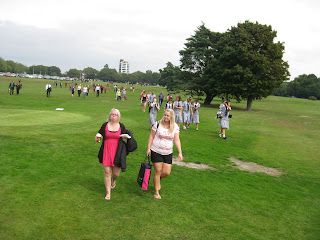Today (Wednesday, Feb. 22) marked
the first anniversary of the Christchurch earthquake which left the downtown
part of the city destroyed and 185 people from 14 countries dead. Even a year later, the inner city continues to
look like a war zone with shipping containers being used as supports for
buildings that are being examined to decide if they can be saved or if they
need to be destroyed. The downtown area
of Christchurch was world-renown for its botanical gardens and breathtaking
cathedrals, a tourist hotspot. Now, that
part of Christchurch is spoken of in solemn tones of regret and sorrow towards
its utter devastation. Even at the
University of Canterbury, the prevalence of the earthquake is inescapable. Several buildings are closed and under construction
and posted in every classroom is a list of procedures to follow if an
earthquake were to occur during the lecture.
Apparently, we had a minor earthquake at the end of last week, but I was
asleep and didn’t feel it. I also didn’t
feel the one in Lexington this summer so maybe I’m immune? But in all seriousness, in the short time
that I have been here I have seen how heavy 12:51 PM on February 22, 2011
weighs on the hearts and minds of the people of Christchurch.
In remembrance of February 22, 2011,
both the University of Canterbury and the city of Christchurch hosted memorial
services to commemorate the earthquake. Classes were cancelled from 10AM-2PM to allow
faculty and students to go to either service and fortunately for me one of my
classes fell in this time period and the other was cancelled. A bunch of us decided to attend the city-wide
memorial service at Hagley Park close to downtown Christchurch. The destination usually requires a bus ride
but Danica, Stephanie, and I decided we would pack our own lunches and leave
early enough to walk the 3-ish miles to the park. The closer we got to the park the more people
we saw converging on the same spot. It
was a really bizarre sight, almost as if we were all part of the same cult and
had been called in for a special ceremony.
Everyone from construction workers and high school students to business
people and families converged in the middle of the park in front of a large
stage and a big screen containing video of the action on stage.
Once we got there, we settled down
in the back with thousands of other people (about 85,000) to listen to Christchurch mayor Bob Parker, New Zealand prime minister John Key, and several other
notable public figures speak about the disaster. A letter from Prince Charles of Wales was
read to the crowd and Secretary of State Hillary Clinton delivered a video
address. A few of us were a little
perturbed by her message, as well-intentioned as it might have been. To us, it seemed as if Clinton focused more
on what the United States had done to help Christchurch than remembering what
the people of the city and the Canterbury region had suffered. Leave it to Americans to try to make
everything about us (I originally typed “them”; only a week and I’m already subconsciously
disassociating myself). The most moving
part of the 90-minute long service was the reading of the names of the 185
people who were killed in the earthquake followed by the release of 185 monarch
butterflies commemorating their deaths.
As someone whose only connection to
the earthquake is the fact that I now reside in the recovering city, I found
myself quietly observing the people around me throughout the service. Most were there as a symbol of community
solidarity, but every now and then I would find someone who looked genuinely
tormented by the memories of that day one year ago. The ground shook for two minutes but their lives
were changed forever. It was an
incredibly moving service well worth the 6+ mile, round-trip walk.
In an effort to better understand
the far-reaching effects of last year’s earthquake, I am taking a course at the
university called “Rebuilding Christchurch”.
The course is a combination of classwork and community service designed
to assist in the recovery of the Garden City.
The students get to determine to some extent which projects we
participate in and how many hours we contribute each week. I’ve heard nothing but good things about the
course so I think it will be a great help in better understanding how the city
continues to be affected by its “darkest day”.
Before & After Earthquake Pics: http://www.stuff.co.nz/national/christchurch-earthquake/4705106/Photos-Before-and-after-the-Christchurch-earthquake
“The time is ripe for
looking back over the day, the week, the year, and trying to figure out where
we have come from and where we are going to, for sifting through the things we
have done and the things we have left undone for a clue to who we are and who,
for better or worse, we are becoming. But again and again we avoid the long
thoughts….We cling to the present out of wariness of the past. And why not,
after all? We get confused. We need such escape as we can find. But there is a
deeper need yet, I think, and that is the need—not all the time, surely, but
from time to time—to enter that still room within us all where the past lives
on as a part of the present, where the dead are alive again, where we are most
alive ourselves to turnings and to where our journeys have brought us. The name
of the room is Remember—the room where with patience, with charity, with
quietness of heart, we remember consciously to remember the lives we have
lived.”
―Frederick Buechner, A Room Called Remember: Uncollected Pieces
―Frederick Buechner, A Room Called Remember: Uncollected Pieces
Kia ora,
Bess




My sweet girl. It's amazing what you can find in your heart when the pace of your life slows to what it should be.
ReplyDelete